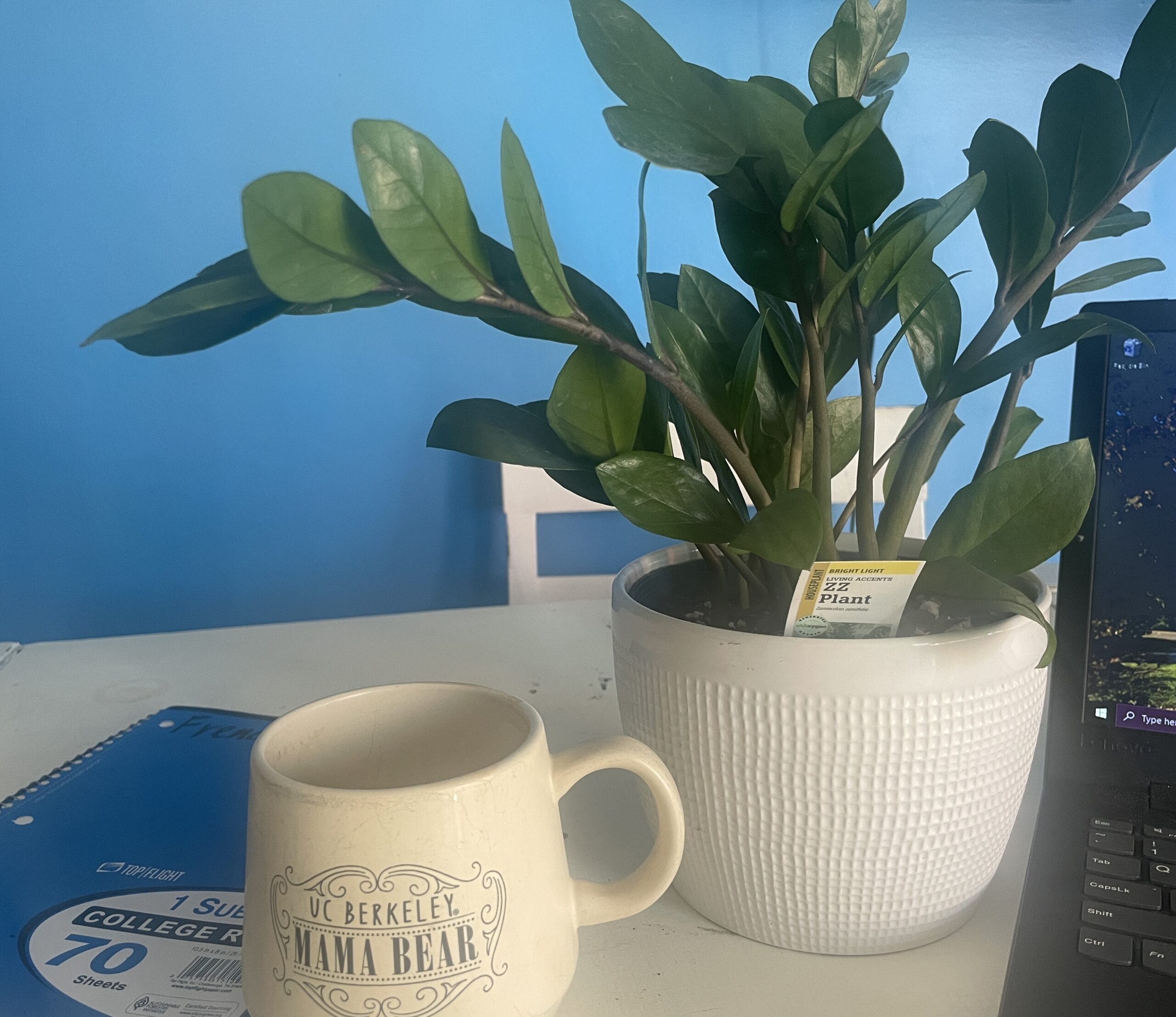It’s Easier to Say “ZZ”
Sitting here having breakfast with a cup of hot instant coffee, I noticed a new growth point on my ZZ plant. Like, hell yeah! That is the slowest-growing plant I own! I have had this plant for nearly four years, and when I first brought it home, it took it out of the pot and was jolted by how rootbound it was. This article teaches how caring for a ZZ Plant is much easier than you may think.
“White Potatoes” in the Soil
The roots looked like a tangly mess of tightly wound ramen noodles, and I didn’t understand those white potato-looking things in the soil. I texted a plant friend, who laughed at me and said, “Girl, report that thing.” Really? Just like that? Well, it has finally taken four years to get a new growth point on this plant, but nobody is mad about it.
A Great Plant for New Plant Parents
ZZ is short for Zamioculcas zamiifolia. It’s the first plant I suggest for new houseplant hobbyists or anyone who thinks they have a black thumb but want to bring a touch of nature indoors.
Funny thing, no one has taken me up on it. Not even my elder brother, who lives in a dark apartment with no plant life. I didn’t expect him to become as enthusiastic about plants as I am. After all, I am in my 40th year of caring for houseplants. But I did think that a low-maintenance plant would give him something else to look at daily beside his ginormous television screen.
Slow Growth Is Annoying
I have one bone to pick with the Zamioculcas zamiifolia plant, though. It grows so darn slow! That is why I am excited about seeing this new growth stem today. I took a chance to touch the growth point to know if it was real because I had nearly given up on this plant, giving me new growth. However, although it was a long time, the emerging growth point is the real deal.
A Nature-Inspired Life Lesson
Ironically, isn’t that how life is sometimes? When you think there is no movement and, indeed, no growth, something seemingly miraculous emerges. This ZZ plant is making my heart smile right now because it is teaching me something valuable in addition to adding beauty to my home and life.
It is a beautiful plant for people like my elder brother, who is not interested in caring for houseplants but could benefit from bringing a touch of nature indoors.
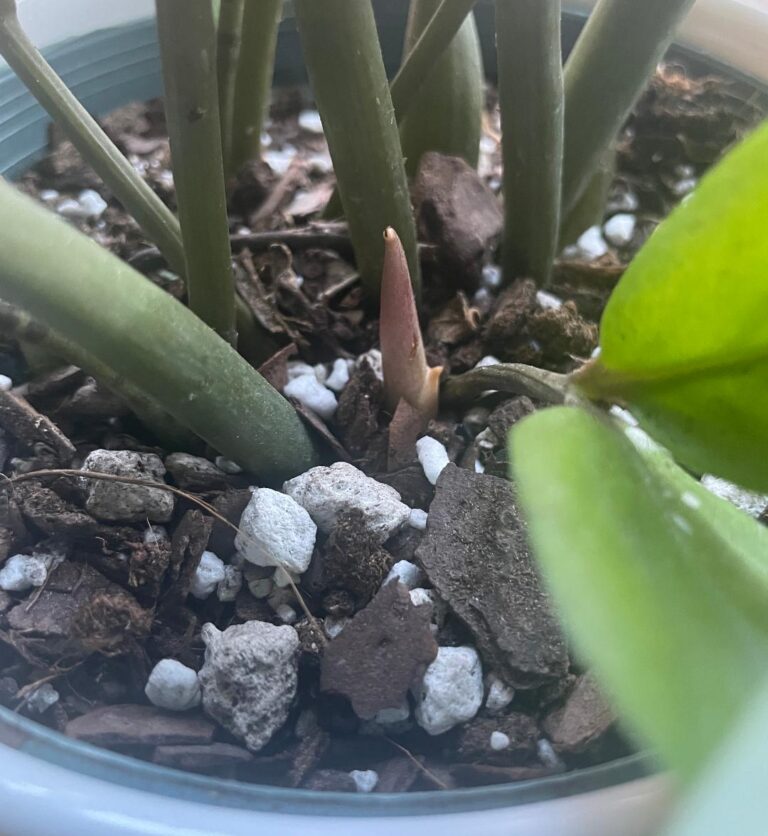
Water Infrequently
When I first learned about care requirements for the ZZ plant, I heard someone say that you should not water it any more than you pay your rent or mortgage. So, unless you are on an accelerated plan to pay off your mortgage early, you pay it once a month. I think that’s a fair assumption.
I write the date on little adhesive stickers to remind me of when I last watered it. Besides, those “potato-looking” rhizomes help with the plant’s watering needs, as mentioned below on the website called “The Spruce.”
How Rhizomes Help Your ZZ Plant
Ensure Adequate Drainage
Remember, when you water your ZZ plant, allow it to drip through the drainage holes before placing it down, especially if it sits in a decorative outer pot with no holes. The soil should be well-draining, so be liberal with perlite, pumice, orchard bark, or other mediums to accomplish that.
It would seem easy if I picked the same date every month. But because I have so many houseplants, it would also be easy to forget about my ZZ plant. After all, it is one of those “set it and forget it” houseplants.
Planter Size
As with all plants, ensure the pot is a little larger than the root ball but never too large because that would encourage root rot. My first ZZ plant was so root-bound that I had to upsize the pot the day I purchased it.
They Prefer Bright Light
And that brings me to the issue of how much light the ZZ plant needs. The darker the plant’s leaves, the more tolerant it is of lower light conditions.
Conversely, plants with high variegation and light spots require more sunlight to maintain their variegation. High indirect light also keeps variegated plants from reverting to all-green foliage. Indirect light means a few feet away from a bright light source.
Let Your Plant Instruct You
Experiment and let your plant tell you what it needs. During the winter, I often leave my ZZ plant close to a south-facing window, and it is okay because the sun exposure time is short due to the shorter days.
Beware of Windowless Spaces
Also, don’t fall for the foolishness, guys. Your ZZ plant still wants a lot of indirect sunlight, even if it tolerates low light conditions. But I would not do “no light” conditions for an extended period.
If you put your ZZ plant in a windowless room such as a bathroom, take it out occasionally to receive some good indirect sunlight for a few days before returning it to a no-light situation. I have done that. 4
Find a Great Location
That said, I have had this plant all over my home. I have had it in a windowless bathroom, in front of a north-facing window, directly in front of a south-facing window, and everywhere in between. And I have some guilt concerning that.
Moving Plants To Frequently
In case you are wondering what I’m talking about, moving house plants around is not a good idea because the conditions in your home or apartment are different from room to room and even on different sides of the same room. The lighting and humidity conditions can vary. I am guilty as charged, as I constantly move most of my plants around.
Do You Like To Relocate Often?
Let’s put it this way. Imagine changing homes or moving into a new apartment every three months or even once a year. You might imagine how stressful that would be because you and your brain would have to acclimate to an entirely different environment with each move.
The same goes for houseplants. Okay, I know those things, but I lack houseplant styling ideas. So, that’s my reason for moving them so often. Have some mercy on me, you all.
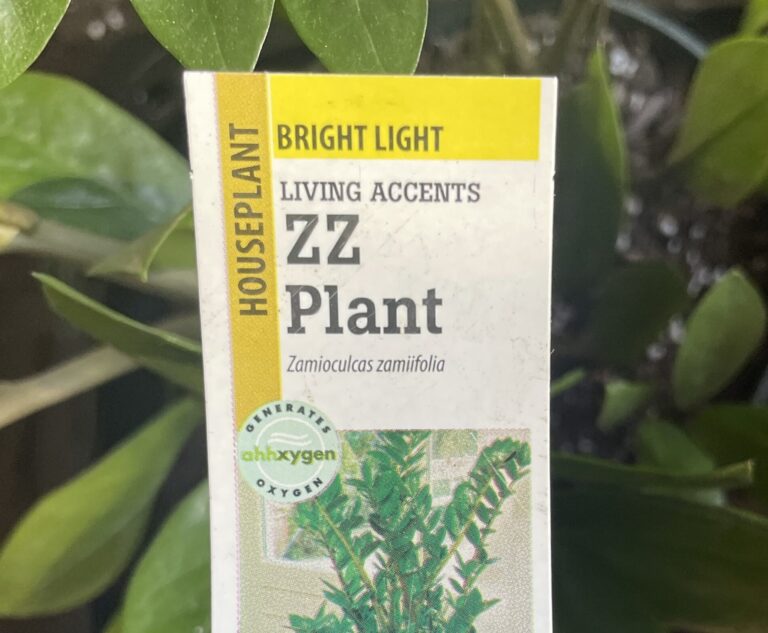
Clean Those Dusty Leaves
Anyway, I think by wiping the leaves down with warm water using a micro-fiber cloth, you give yourself a chance to catch any unwanted creepers from sucking the life out of your ZZ plant.
And speaking of what it needs. You can see the amount of dust collected on the leaves of my ZZ! That is something worth mentioning not only for aesthetic reasons but also for plant health reasons.
Dusty Leaves Slow Growth
The ZZ plant collects a LOT of dust very fast. And perhaps it only seems that way because its leaves are so dark that it makes the dust more noticeable. But the other reason is that dust prevents the plant from receiving the maximum sun needed for photosynthesis and growth.
My failure to wipe the leaves regularly may slow its growth even further. So, that is why I don’t believe the hype about a ZZ plant “thrives on neglect.” While a ZZ plant does not need as much routine maintenance as a tropical plant, it still requires regular care and nurturing
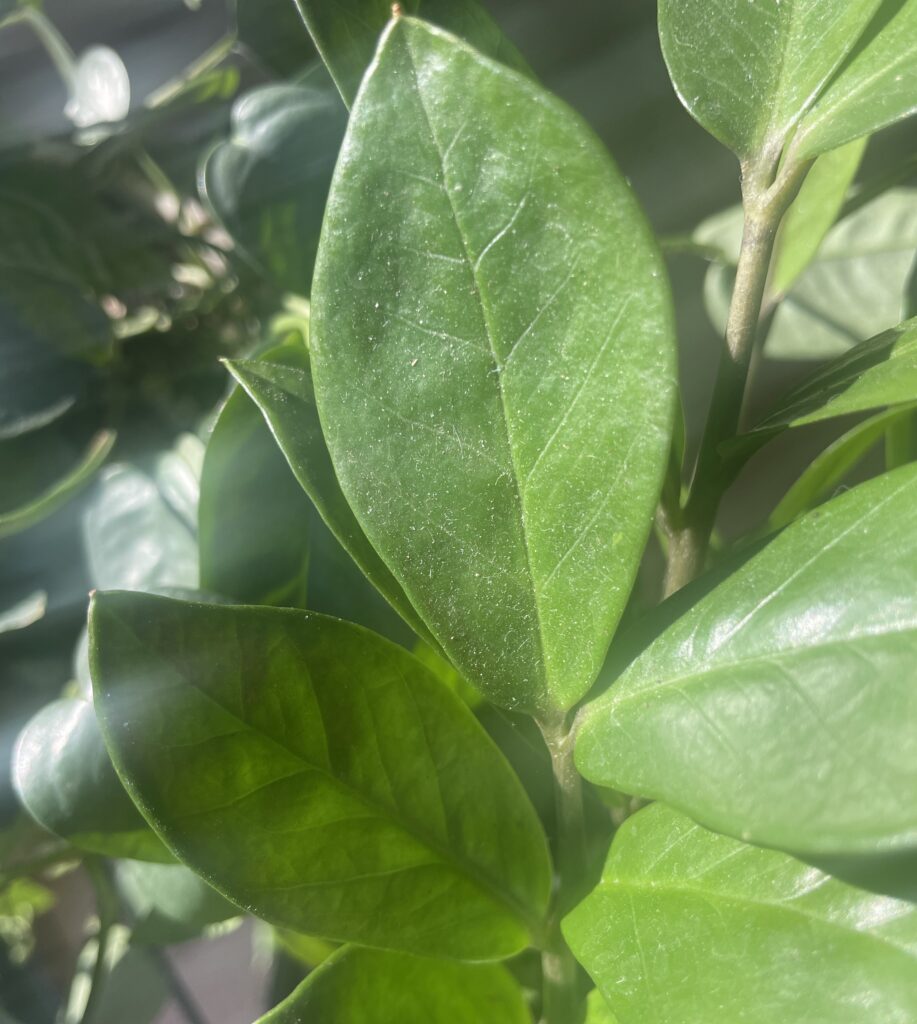
Life’s Little Contradictions
So, getting back to my morning coffee and breakfast, I picked up the care tag from the soil of my ZZ plant and noticed an apparent contradiction. It says that I need to keep the soil “moderately moist.” Now, that is a contradiction if I ever heard one.
Those “white potato-like” bulbs in the soil are called rhizomes. Their job is to retain water, so you should not water the ZZ plant more than once a month or even less during winter, as with most plants.
Moist Soil or Not?
So, do I keep the soil moist or not? Once, I forgot to check the date tag on my ZZ and watered it within two weeks. As a result, some leaves did not take long to turn yellow and die off. So, there you have it. It doesn’t like its soil kept too moist.
I will ignore the care tag that came with the plant and do my own thing as the plant speaks to me. We have a 4-year relationship built on trust, although it doesn’t require too much from me, so I will let it show me what it needs.
Fertilize When It’s Growing
The tag says I should fertilize during the growing season, which speaks for all plants. However, unlike many tropical plants with a distinctive growing season, such as from Spring-Fall, ZZ plants grow so slowly that I need to find out when their growing season is. Or are we to assume that it is constantly increasing but very slowly?
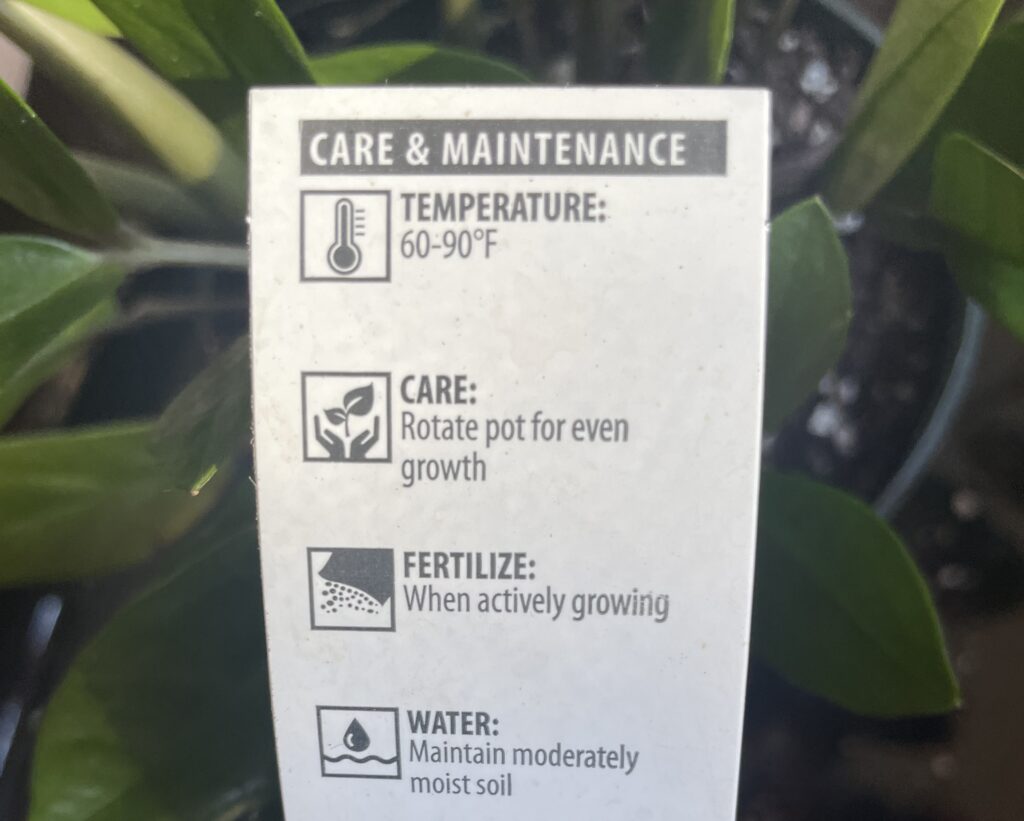
Creepy Pests
I don’t think I have ever had pests on my ZZ plant, although one time, I thought there were insects too small to see because some of the stems got soft and the leaves turned yellow. Perhaps they were older leaves that were ready to go anyway.
Regular Pest Prevention Habits
I don’t usually have pests on my houseplants. Still, if it ever happens, I am well-armed with pesticide sprays and systemic products. But if I periodically spray my ZZ down with Neem Oil, I think I will continue to keep the creep-crawlies away.
The only time I ever got any pests on my plants was when I put a few of them outside under the canopy of a big Crepe Myrtle tree. That darn tree is a magnet for Japanese beetles during the summer months, so I am not surprised that it attracts mealy bugs, too. But I have never put my ZZ plant outside.
Other Types of ZZ Plants
In addition, I should also mention that there are different types of ZZ plants. There is the Raven ZZ, which has thick, black leaves. That one looks rich, and I plan to get one only after deciding on prime real estate in my home.
There is a more compact form called the ZZ Zenzi, one I suggested for my son when he asked for a recommendation for a small spot on his bathroom sink.
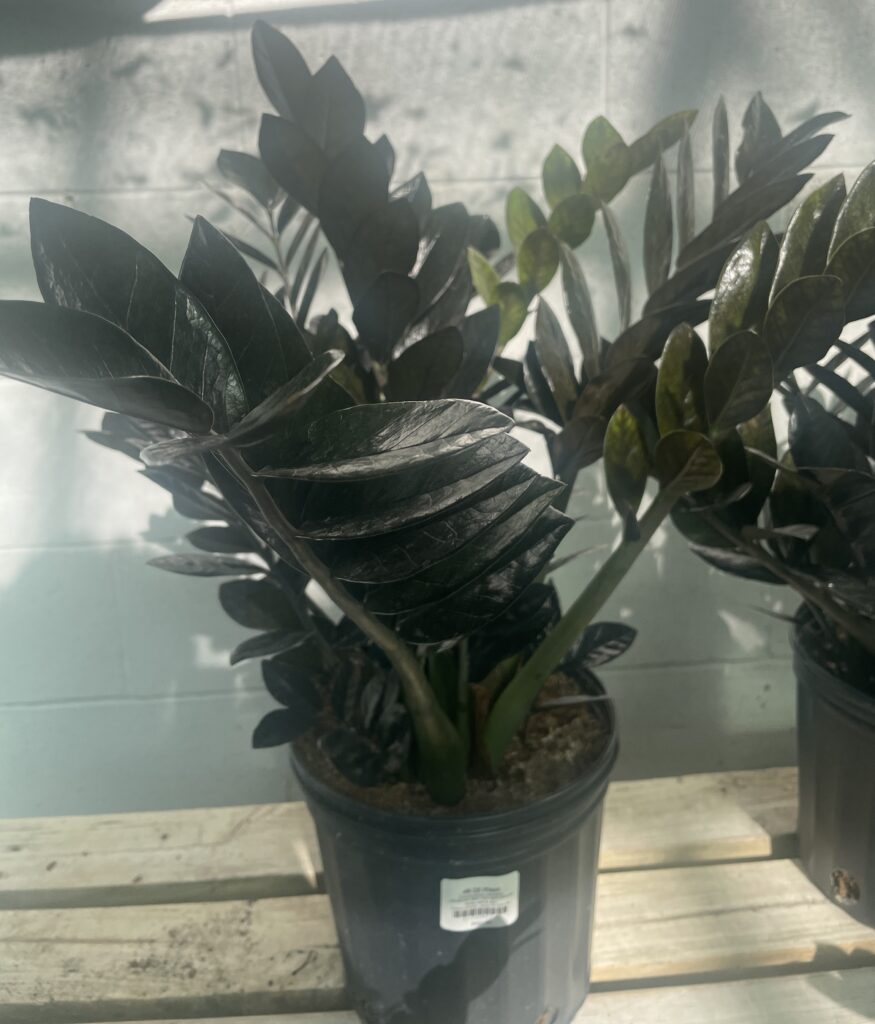
Finally, whether you are a houseplant newbie or a seasoned plant parent, I recommend getting one if you don’t already have a ZZ plant. If you currently have no houseplants, it is an excellent way to build confidence in caring for plants as long as you don’t water them more frequently than you pay your rent!
Happy planting to you and yours!
Feel free to comment on this article or email me at Denise@TalkGumbo.com.
To subscribe to this blog for free, click here!

